If you're looking for an exciting and high-tech way to explore the skies, a 3D printed drone might be just what you need. These drones are designed and built using 3D printing technology, which allows for incredible customization and precision. However, before buying a 3D printed drone, there are several factors to consider to ensure you get the best possible product.
Firstly, it's important to think about the purpose of your drone. Do you want to use it for photography or video, or for racing and other high-speed activities? This will help you decide on the appropriate size, shape, and features for your drone. Additionally, you should consider the materials used in the 3D printing process, as well as the quality of the other components such as the motors and electronics.
To make your decision easier, here are some questions to ask yourself before buying a 3D printed drone: Do you want a sleek and lightweight design or a heavier, more durable model? What kind of control options do you need, such as a remote control or smartphone app? And finally, what kind of flying experience are you looking for – something slow and steady or fast and agile?
By answering these questions and carefully considering your options, you can find the best 3D printed drone for your needs and take to the skies with confidence. With their cutting-edge technology and customizable designs, these drones offer an exciting way to explore the world from above.
10 Best 3D Printed Drone
| # | Product Image | Product Name | Product Notes | Check Price |
|---|---|---|---|---|
|
1
|
The product is ideal for FPV beginners who want a light and durable drone frame made of carbon fiber and 3D printed parts.
|
|
||
|
2
|
Ideal for capturing stunning aerial footage with advanced stabilization features, dual batteries for extended flight time, and GPS auto return home.
|
|
||
|
3
|
The product is ideal for capturing high-quality aerial footage and providing an entertaining flying experience for adults and beginners.
|
|
||
|
4
|
The iFlight Chimera5 DC FPV Frame is ideal for building a high-performance freestyle quadcopter drone with added arm protection.
|
|
||
|
5
|
The product is ideal for building a small, high-performance quadcopter for first-person-view (FPV) racing or aerial photography.
|
|
||
|
6
|
The product is ideal for drone enthusiasts looking for a lightweight and durable carbon fiber quadcopter frame for long-range flights.
|
|
||
|
7
|
This product is ideal for aerial filming and racing with a GoPro camera mounted on its 3D printed mount.
|
|
||
|
8
|
Ideal for beginners looking for a lightweight drone with a good camera, stability, longer flight time, and features like GPS.
|
|
||
|
9
|
This product is ideal for building a lightweight and high-performance racing drone with a split mini 2 camera setup.
|
|
||
|
10
|
This product is ideal for DIY enthusiasts looking to build their own lightweight carbon fiber frame drone for racing or freestyle.
|
|
1. Tcmmrc Carbon Fiber Freestyle Drone Frame
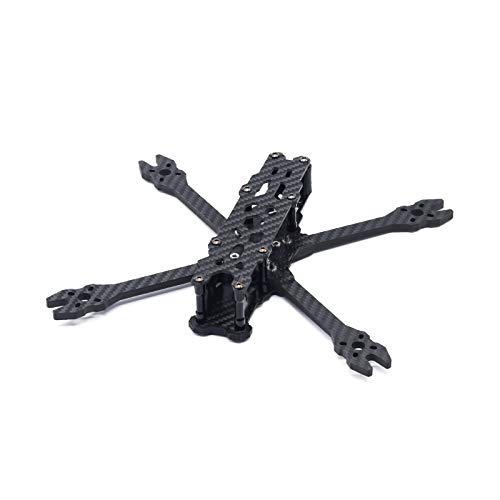
This drone frame is specifically designed for 5-inch propellers and has flight control hole positions that are compatible with m3 * 20 * 20MM / 30.5 * 30.5mm. The side panel of the frame features a mounting hole for a 19mm (micro) camera, and the print is situated under the camera for added protection. Additionally, the print can absorb and buffer the impact of any collisions the drone may experience due to its flexible material.
The rear section of the frame is equipped with a print that functions as the image transmission antenna. This hybrid-x drone frame is engineered with a stable structure that is perfect for outdoor acrobatic flying. With its sturdy build and reliable components, this frame is an excellent choice for pilots looking for a top-quality drone that can handle challenging aerial maneuvers.
Whether you're an experienced drone pilot or just starting, this drone frame is easy to use and maintain. Its simple design allows you to easily assemble and disassemble the drone for repairs or upgrades. The frame is also lightweight and compact, making it easy to transport and fly.
2. Ruko 4k Drone: Epic Flight Experience Guaranteed!
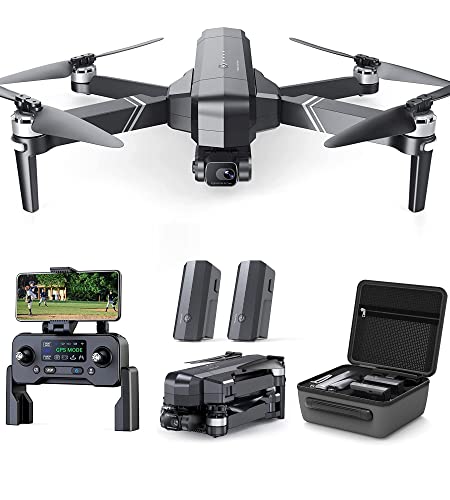
The Ruko F11GIM drone is an impressive piece of technology that boasts a 2-axis gimbal and Electronic Image Stabilization (EIS) to capture clear 4K/30fps video and 5x zoom photos. Its camera features a 100° FOV wide angle, which can be adjusted to 80° and supports gesture shooting. You can store footage on a microSD card up to 128G, giving you plenty of space for all your media.
One of the best features of the Ruko F11GIM drone is its long flight time of up to 56 minutes, thanks to its two 2,500 mAh batteries. Each battery provides up to 28 minutes of flight time, and they take about 4.5 hours to recharge. It is recommended to use a 5V-3A/2A charger to ensure optimal performance. The drone also has a visual battery level indicator, making power monitoring a breeze.
With GPS and powerful brushless motors, the Ruko F11GIM drone is easy to control and comes with intelligent GPS flight modes such as "follow me," "waypoint flight," and "point of interest." You never have to worry about losing your drone, even during windy conditions, as it has level-six wind resistance for stable flight in winds up to 31 mph. The controller and app allow for easy adjustment of flight speed and provide a 3937ft FPV 5G transmission video.
The drone's smart return home feature is perfect for beginners, as it will automatically fly back to its take-off location in case of low battery or loss of signal. It also supports one-button return, making it easy to bring the drone back to you.
The Ruko F11GIM drone is backed by a 30-day return and exchange policy, as well as a 90-day product guarantee. If you encounter any issues with the product, Ruko support is always available to assist you. Overall, the Ruko F11GIM drone is an excellent choice for anyone looking for a reliable and high-quality drone with impressive features and capabilities.
3. Foldable Wifi Drone With 1080p Camera & App Control
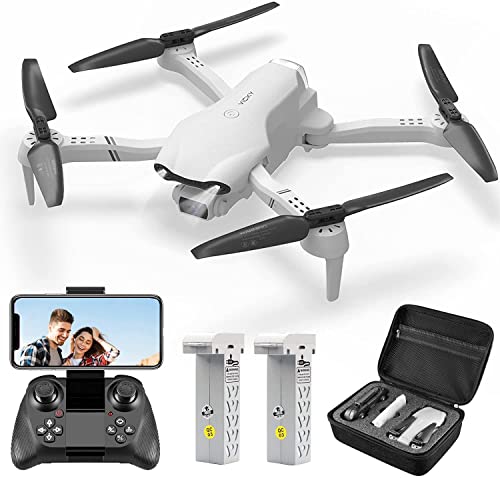
The F10 drone is an incredible gadget that provides a first-person view (FPV) through its 1080P HD camera. With a smooth transmission range of up to 120m, users can capture and record high-quality aerial footage of the beautiful scenery and share it instantly on social media through the app.
One of the significant advantages of the F10 drone is its prolonged flight time. The powerful modular battery provides a maximum of 21-minutes of flight time, and with an additional battery, it can extend up to 42-minutes. The modular battery is also easier to install and safer to use, which adds to the user's convenience.
The F10 drone is built with multiple flight modes, making it a versatile gadget that can perform stunts like 360° flips, high-speed rotations, and more. Users can also draw a path on the app screen, and the drone will follow the designated route accordingly. Moreover, there are three ratio options available to satisfy different user needs.
The F10 drone is easy to control, even for beginners. With the “One Key Start/Landing” button, the drone can take-off or land automatically. The two-speed switch options make it more suitable for kids and beginners or adults and professionals. The drone is equipped with a “One Key Return” button, which ensures that the drone returns to the user in emergency situations and prevents it from getting lost.
The F10 drone is designed to be user-friendly and easy to operate. The Smart Return to Home, automatic takeoff, and precise hovering features enhance the user experience and ensure the operation is streamlined and safe. The One-Key High-speed Rotation adds more fun to the user's flight experience, making the possibilities endless when the sky is their playground.
Despite its small size, the F10 drone is mighty and equipped with advanced features packed into a foldable frame. The carrying case provided makes it easy to move the drone from one place to another, providing complete freedom to explore the world without limitations.
4. Iflight Freestyle Quadcopter- 235mm 5inch!
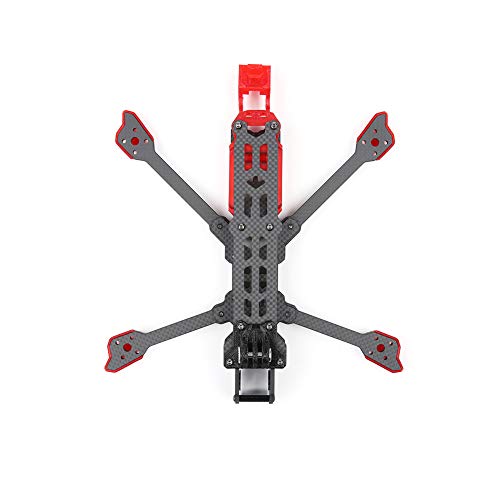
The Chimera5 5-inch version is a top-tier lightweight drone frame that offers a seamless flying experience. Its frame is designed to make the drone feel lightweight, which allows for smoother and faster flights.
The main body dimensions of the Chimera5 5-inch version measure 186.5mm by 150.8mm, making it suitable for 30.5mm by 30.5mm and 20mm by 20mm flight controller stack mounting patterns. It's multi-purpose holes make it easy to mount various components, making it a versatile choice for drone pilots.
The Chimera5 5-inch version also boasts of excellent shock absorption capabilities. It comes with a full set of 3D printed parts that offer better protection for your drone. This feature enhances the drone's longevity, making it a wise investment for drone enthusiasts.
The Chimera5 5-inch version also features an easy-swap arms design. Its arms have a 5mm thickness, which makes them more durable. This innovative design makes it easy to replace the arms, which means you can swap them out quickly and efficiently if they get damaged.
The Chimera5 5-inch version is an excellent choice for anyone looking for a high-quality drone frame. If you have any questions or concerns about the product, the manufacturer offers excellent customer service. You can contact them at any time, and they will be happy to help you out within 24 hours. Overall, the Chimera5 5-inch version is a reliable and efficient drone frame that will provide you with a top-notch flying experience.
5. Alfa-Genie110 Micro Carbon Fiber Fpv Racing Quad
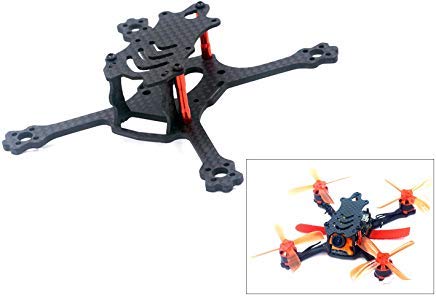
This high-performance FPV drone racing and freestyle quadcopter is designed for both beginners and experienced pilots alike. It features a strong and sturdy stretch X structure that makes it ideal for racing and free style flying. The quadcopter is designed to support Runcam micro swift, micro sparrow, and other mini cameras, making it highly versatile and customizable to meet your specific needs.
The quadcopter has a wheelbase of 110mm, and a bottom plate thickness of 2.5mm, ensuring that it is both durable and lightweight. This makes it easy to maneuver and control, even at high speeds. The quadcopter is optimized for maximum performance, ensuring that you can get the most out of your flying experience.
Whether you're a beginner or an experienced pilot, this quadcopter is perfect for you. It is easy to assemble and comes with all the necessary components, making it easy to get started right away. With its high-performance design and versatile camera support, this quadcopter is sure to provide you with hours of fun and exciting flying. So why wait? Get your hands on this amazing quadcopter today and experience the thrill of FPV drone racing and freestyle flying like never before!
6. Nanofly 3-Inch Carbon Fiber Fpv Quadcopter Kit.
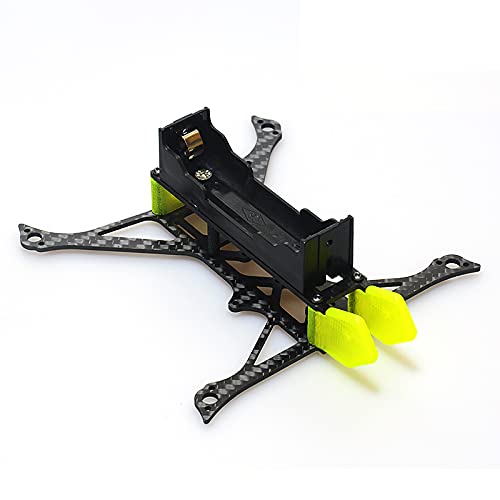
This drone is the perfect choice for those who are looking for a high-quality, long-range flying experience. The drone comes equipped with a powerful 1s 18650 battery, which provides up to 15 minutes of flight time. This means that you can fly longer and explore more without worrying about your drone running out of power.
The drone features a flight control mounting hole of 16X16/20×20/25.5X25.5mm and a motor mounting hole of 9X9mm, which makes it compatible with a variety of different equipment. Additionally, the drone is built with the highest quality materials to ensure that it can withstand a lot of wear and tear. The drone's 3mm bottom plate is particularly resilient, which ensures that it can take a beating without breaking.
The camera on this drone is also well-protected, thanks to the 3d-printed Protector. This means that you can capture high-quality footage without worrying about damaging your camera. The drone also has a VTX mounting hole of 16X16mm, which provides a secure and stable mount for your VTX.
The drone's bottom plate thickness is 3MM, which makes it sturdy and durable. Despite its high-quality build, the drone is lightweight, weighing in at only about 34 grams. This makes it easy to carry and maneuver while you're flying.
7. Carbon Fiber Quadcopter Kit With Gopro Mount.
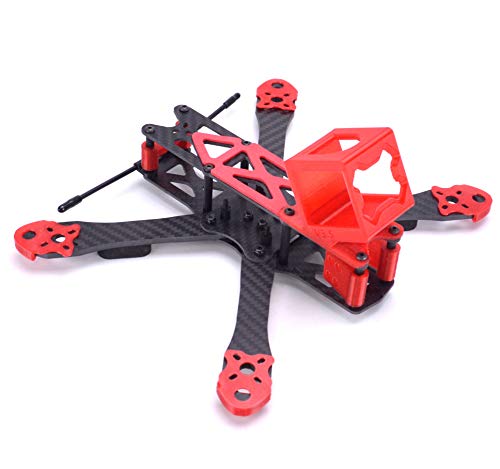
The drone enthusiast looking for a sleek and sturdy build will be impressed by this drone's features. The drone boasts 3D printed parts in an eye-catching red color, adding a fashionable touch to its design. The body of the drone is constructed with full 3K carbon fiber, making it lightweight while maintaining its strength.
Assembling the drone is made easy, making it suitable for both beginners and more experienced players. The ample space in the drone allows for easy fitting of FPV equipment and reduces the mess of wires. The drone's stable structure is a noteworthy feature, as its body structure provides solid support for the top plate, bottom board, and arm.
8. Minise: The Ultimate Beginner's Drone.
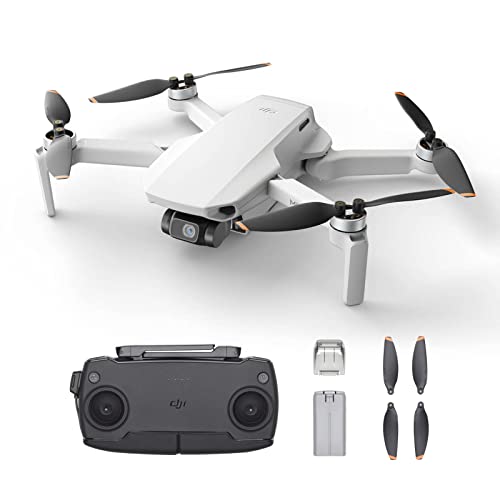
The DJI Mini SE camera drone is a lightweight and powerful device designed for creators on the move. Weighing less than 0.55lbs/249 grams, it is roughly the same weight as a smartphone, making it ultra-portable. In the United States and Canada, you can fly this camera drone without the need to register your drone with the local government. The DJI Mini SE operates within an operating temperature range of 0° to 40°C (32° to 104°F) and has a wide operating frequency range of 5.725-5.850 GHz (Model MT2SS5) and 2.400-2.4835 GHz, 5.725-5.850 GHz (Model MT2SD25).
The DJI Mini SE is perfect for capturing moments on the go. Its lightweight design allows for effortless maneuverability, making it easy to capture unforgettable memories in different environments. With a fully-charged battery, the DJI Mini SE can stay in the air for up to 30 minutes, longer than similar consumer drones on the market.
One of the most impressive features of the DJI Mini SE is its ability to capture stunning photos and videos. It supports 12MP aerial photos and 2.7K HD videos, ensuring that every detail is captured in high-quality. The 3-axis motorized gimbal provides superior camera stability and ensures clear ultra-smooth footage.
The DJI Mini SE is also designed to withstand wind resistance better than other drones in its class. It can resist winds of 29-38kph and take off at a maximum altitude of 4,000 meters, ensuring stable footage even when flying along a windy coastline or high above an alpine forest.
For those who are new to drone photography and videography, the DJI Fly app offers a variety of Creator Templates that generate awesome videos with just a tap. The app is easy to use, and even beginners with no editing experience can turn any moment into a social media hit.
9. Rumcam-Split Mini 2 Quadcopter: Carbon Frame Edition

The GX140 frame is a top-quality drone frame that caters to all your drone racing needs. Made of high-quality 3K Carbon Fiber, the frame is designed to withstand multiple crashes and abuses, thanks to its 4mm bottom plate and 2mm upper plate.
The Twin Tower design is what sets this frame apart from the rest. The design allows for two flight towers to be accommodated, one in the front and another in the rear end of the frame. With 25mm aluminum standoffs, there is plenty of space to comfortably put all the components inside.
The GX140 frame is a powerful frame that works perfectly with 13** 14** 15** 16** brushless motors with 12*12mm mounting holes, including 1306 1407 1507 1608 motors. It is essential to note that it doesn't support 11** series motors. Make no mistake; this frame can pump out huge energy in a split second, giving you the racing edge you need.
The frame is specially designed for Rumcam split mini 2 Caddx Turtle V2 1080P HD FPV camera, enabling you to capture great FPV footage with no props in the view. The package includes the GX140 frame, a camera mount, four motor protectors, and a 3-in-1 holder for antenna and power cord, ensuring that you have all the necessary components to get started.
10. Qwinout Carbon Fiber 65mm Toothpick Drone Kit
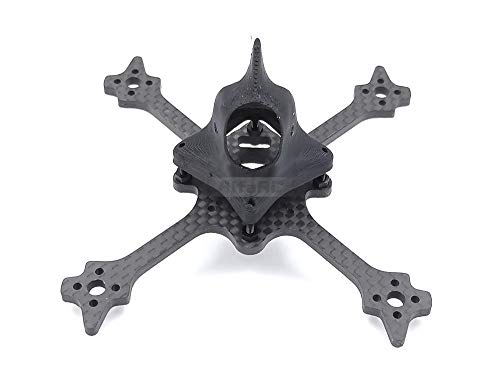
Looking for a thrilling DIY project that will make your dreams take flight? Look no further than this incredible Quadcopter kit! Whether you're an experienced aircraft enthusiast or simply looking to explore the exciting world of drone building, this kit has everything you need to get started.
With its high-quality components and easy-to-follow instructions, you'll be able to build your very own Quadcopter in no time. From the sleek, aerodynamic design to the powerful motors and precision controls, every aspect of this kit has been carefully crafted to ensure the best possible performance and stability.
So why wait? Join us today and start building your own Quadcopter! With its endless possibilities for customization and innovation, the sky truly is the limit. Whether you're looking to explore new heights, capture stunning aerial photography, or simply enjoy the thrill of flying, this kit is the perfect choice for anyone who wants to make their dreams take flight. So why wait? Order your Quadcopter kit today and start building your own aircraft!
Best 3D Printed Drone FAQs
How can 3D printing be used to customize and personalize a drone?
3D printing technology can be used to customize and personalize a drone in several ways. Firstly, it allows users to design and create their own drone parts and accessories, enabling them to tailor the drone's functionality to their specific needs. For example, a 3D printer can be used to create a custom camera mount or a specialized sensor housing for a drone.
Secondly, 3D printing can be used to create unique and personalized drone exteriors. This could include custom skins or decals, or even fully 3D printed drone shells that are designed to the user's specifications.
Thirdly, 3D printing can also be used to repair or replace broken or damaged drone parts. This is particularly useful for older or discontinued drone models, where replacement parts may be difficult to find or expensive to purchase.
Overall, 3D printing technology offers drone enthusiasts the opportunity to create bespoke and highly customized drones that are tailored to their specific needs and preferences.
How do the materials used in 3D printing affect the performance of a drone?
The materials used in 3D printing can significantly affect the performance of a drone. The most commonly used materials for 3D printing drones are ABS, PLA, Nylon, and PETG. Each material has its own unique properties that can impact the drone's performance in different ways.
ABS is a popular choice for 3D printing drone parts due to its strength and durability. It can withstand high temperatures and is resistant to impact, making it ideal for parts that are exposed to stress and strain.
PLA, on the other hand, is a biodegradable material that is easy to print and has a smooth surface finish. However, it is not as durable as ABS and may crack or break under stress.
Nylon is a strong and flexible material that can absorb shock and vibration. It is ideal for drone parts that require flexibility and durability, such as propellers and landing gear.
PETG is a lightweight and durable material that is resistant to impact and UV radiation. It is a good choice for drone parts that require strength and durability, such as motor mounts and frames.
In summary, the materials used in 3D printing can greatly affect the performance of a drone. It is important to choose the right material based on the specific requirements of the drone part to ensure optimal performance.
How does the cost of a 3D printed drone compare to a traditional one?
The cost of a 3D printed drone can vary based on a number of factors such as the quality of the materials used, the complexity of the design, and the size of the drone. Generally, the cost of a 3D printed drone can be lower than that of a traditional one. This is because 3D printing allows for the production of intricate parts and components that would otherwise require expensive machinery and skilled labor to produce. Additionally, 3D printing allows for the creation of custom parts that can be tailored to the specific needs of the drone, which can save on costs associated with ordering and shipping specialized parts. However, it is important to note that the cost savings associated with 3D printing may be offset by the initial investment required to purchase a 3D printer and the time and expertise needed to design and print the drone. Ultimately, the cost comparison between a 3D printed drone and a traditional one will depend on the specific circumstances and requirements of the project.
How easy is it to assemble and fly a 3D printed drone?
Assembling a 3D printed drone is not a difficult task, but it does require some technical skills and knowledge of electronics. The process involves several steps, such as printing the parts, assembling the frame, attaching the motors and the electronic components, and configuring the flight controller. However, with the right guidance and resources, it can be a fun and rewarding experience.
Flying a 3D printed drone also requires some experience and practice. It is important to start with a small and simple model and learn the basics of flight control, such as throttle, pitch, roll, and yaw. Additionally, it is essential to follow the safety guidelines and regulations related to drone flying, such as avoiding crowded areas and flying below the legal altitude.
Overall, the ease of assembling and flying a 3D printed drone depends on one's technical skills, experience, and dedication. With the right attitude and resources, anyone can learn to assemble and fly a drone successfully.
What are the advantages of a 3D printed drone over a traditional one?
There are several advantages of a 3D printed drone over a traditional one. Firstly, 3D printing technology allows for greater customization of the drone's design, resulting in a more efficient and aerodynamic shape. This can lead to better performance and longer flight times. Additionally, 3D printing allows for the use of lightweight materials, which can reduce the overall weight of the drone and increase its maneuverability.
Another advantage of 3D printed drones is the ability to quickly and easily replace damaged parts. Traditional drones often require ordering and waiting for replacement parts to arrive, which can be time-consuming and expensive. With 3D printing, replacement parts can be printed on-demand, reducing downtime and costs.
3D printed drones are also more environmentally friendly than traditional ones. The use of lightweight materials and customization reduces waste and energy consumption during manufacturing. Additionally, 3D printing allows for the use of recycled materials, further reducing environmental impact.
Overall, the advantages of 3D printed drones include greater customization, improved performance, reduced costs and downtime, and increased environmental sustainability.
What are the best 3D printing techniques for making a drone?
There are several 3D printing techniques that can be used for making a drone. However, the best techniques depend on the specific needs and requirements of the drone. Here are some of the most common 3D printing techniques for making a drone:
1. Fused Deposition Modeling (FDM): This technique is widely used for making drones due to its low cost and ease of use. With FDM, the drone's components are printed layer by layer using molten plastic filament.
2. Stereolithography (SLA): This technique uses a liquid resin that is cured with a laser to create the drone's components. SLA can produce high-quality and detailed parts, making it ideal for creating complex drone designs.
3. Selective Laser Sintering (SLS): This technique uses a laser to fuse powdered materials together to create the drone's components. SLS can produce strong and durable parts, making it ideal for creating functional drone parts.
Ultimately, the best 3D printing technique for making a drone depends on the specific needs and requirements of the drone. It's important to consider factors like cost, complexity, and durability when choosing a 3D printing technique.
What are the best accessories and add-ons for a 3D printed drone?
There are a variety of accessories and add-ons that can enhance the functionality and performance of a 3D printed drone. One popular accessory is a camera mount, which allows for aerial photography and videography. Another useful add-on is a GPS module, which can improve the drone's navigation and stability. Additionally, propeller guards can protect the drone's blades from damage during crashes or collisions.
Other popular accessories include LED lights for night flying, battery monitors to keep track of power levels, and an upgraded remote control for greater range and control. Some drone enthusiasts also choose to print custom parts, such as landing gear or a customized frame, to fit their specific needs and preferences.
When choosing accessories and add-ons for a 3D printed drone, it's important to consider the compatibility with the drone's existing components and the overall weight and balance of the drone. It's also important to follow manufacturer guidelines and safety precautions when installing and using any add-ons or modifications.
What is the best 3D printed drone on the market?
There are many 3D printed drones available on the market, each with its own unique features and capabilities. However, it is difficult to determine a single "best" 3D printed drone as it ultimately depends on the individual's needs and preferences.
One popular option is the DJI Phantom 4 drone, which can be customized with 3D printed parts to enhance its performance and functionality. Another notable 3D printed drone is the PowerUp FPV, which allows users to experience first-person-view flying through a smartphone app.
It is important to keep in mind that while 3D printed drones can offer unique advantages, such as customization and affordability, they may not always be as reliable or durable as commercially produced drones. It is recommended to thoroughly research and compare different options before making a purchase.
What is the maximum speed and range of a 3D printed drone?
The maximum speed and range of a 3D printed drone can vary depending on different factors, such as the size, weight, and design of the drone, as well as the type of materials used for the 3D printing. However, in general, 3D printed drones can reach speeds of up to 50-60 miles per hour and have a range of 20-30 minutes of flight time or up to 5-10 miles of distance. It is important to note that these figures are not fixed and can be improved or reduced depending on the specific drone's design and the materials used. Additionally, factors such as wind conditions, altitude, and battery life can also affect the speed and range of a 3D printed drone.
What safety precautions should be taken when using a 3D printed drone?
When using a 3D printed drone, there are several safety precautions that should be taken to ensure safe operation. Firstly, it is important to carefully inspect the drone before each use to ensure that all parts are securely fastened and in good condition. It is also important to follow the manufacturer's guidelines for assembly, operation, and maintenance of the drone.
Additionally, it is important to use the drone in a safe and responsible manner. This includes flying in areas that are designated for drone operation and avoiding areas with crowds or restricted airspace. It is also important to maintain a safe distance from people, animals, and property while operating the drone.
Finally, it is important to be aware of the potential risks associated with operating a drone, such as collisions, crashes, and loss of control. It is important to take precautions to minimize these risks, such as using propeller guards and avoiding flying in adverse weather conditions.
Overall, by following these safety precautions, users can ensure safe and responsible operation of their 3D printed drone.
